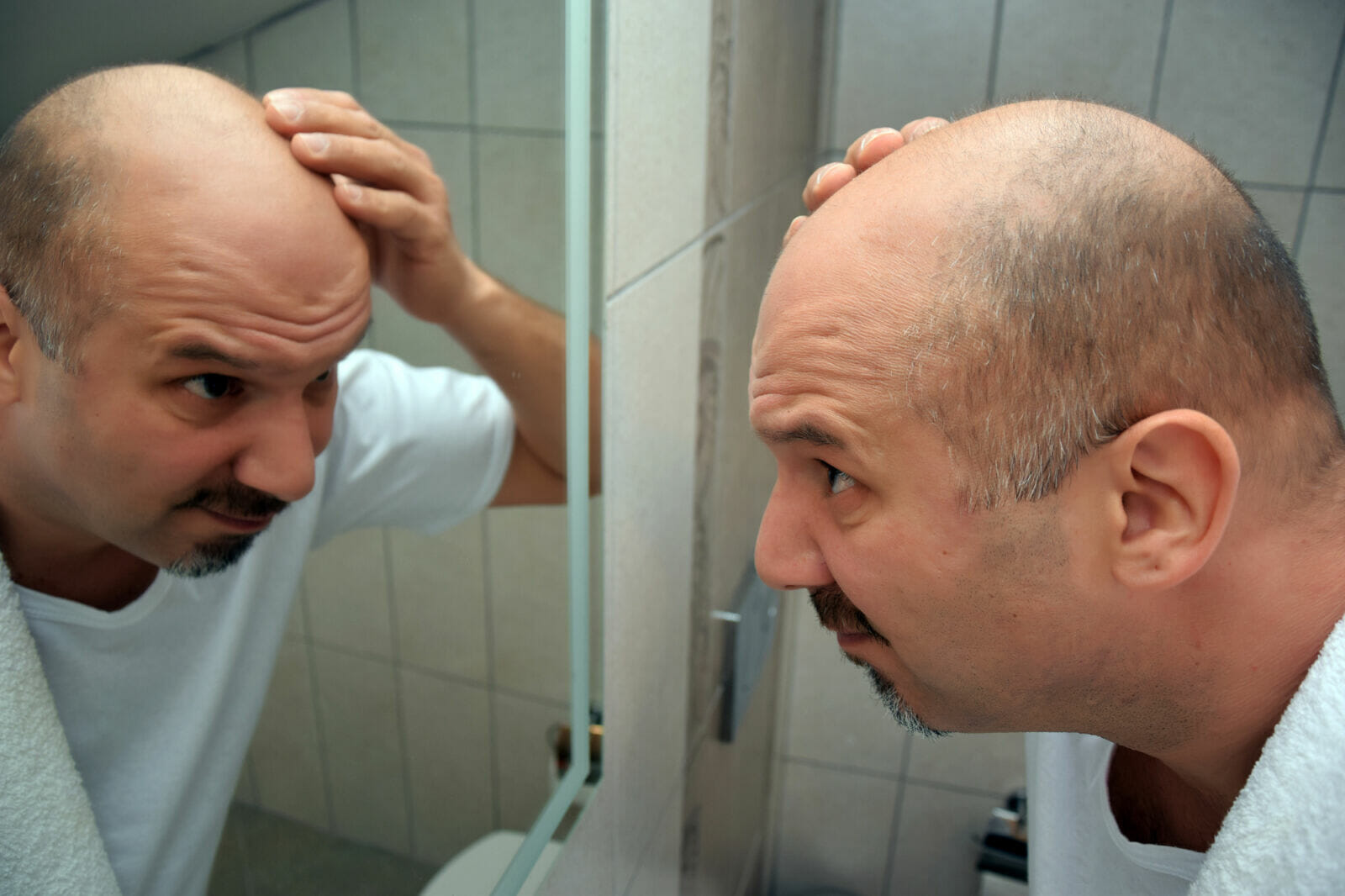Androgenetic alopecia, also known as pattern hair loss, affects about 50 million men in the US. It also impacts approximately 30 million women in the country.
Unfortunately, hair loss causes not only aesthetic problems but psychological issues, too. For instance, researchers found that patients with such conditions are more anxious. Some even develop depression and live a lower quality of life.
Fortunately, the drugs RU58841 and finasteride may help treat pattern baldness.
To that end, we came up with this guide comparing RU58841 vs. finasteride. So, read on to discover what these drugs are, how they work, and the difference between them.
A Quick Word on Androgenetic Alopecia
Researchers link androgenetic alopecia to androgens. Androgens, in turn, are hormones that help develop male characteristics. As such, they’re present in higher levels in men than women.
The most well-known androgen is testosterone, the primary male sex hormone. Another is dihydrotestosterone (DHT), derived from testosterone.
While DHT helps develop the penis and prostate gland, studies also link it to scalp hair loss. It seems that this hormone binds to the androgen receptors (ARs) on the scalp’s hair follicles. From there, it can trigger the follicles to begin shrinking.
Unfortunately, the shrinking of the follicles can lead to alopecia, including pattern baldness.
For that reason, blocking or reducing DHT may help keep the follicles from shrinking. That, in turn, can help prevent the progression of androgenetic alopecia.
What Then Is RU58841?
RU58841, also referred to as HMR-3841 or PSK-3841, is a nonsteroidal antiandrogen (NSAA). It’s a substance that acts upon androgen receptors (ARs) in the scalp. Androgen receptors, in turn, are proteins that allow the body to respond to androgens.
There are several types of NSAAs, one of which is a group of drugs known as AR antagonists. RU58841 belongs to this specific category of NSAAs. However, note that the Food and Drug Administration (FDA) hasn’t approved RU58841 yet.
In any case, AR antagonists, also called AR blockers, prevent androgens from binding to ARs. As a result, they can block the effects of androgens.
For the same reason, the use of RU58841 may help prevent DHT from triggering hair loss on the scalp.
The thing is, only a few studies have published the effects of RU58841. However, one of the earliest ones found it might be helpful for androgenetic alopecia. The same review suggested its potential for treating acne and hirsutism.
A later study conducted in 1998 then tested RU58841 on stump-tailed macaques. It found that the drug increased hair density in the subjects with bald patterns. The subjects also experienced an increase in ticketing and hair length.
What About Finasteride?
Finasteride, sold under brand names like Propecia and Proscar, is also an NSAA. The US Food and Drug Administration approved its use for male pattern hair loss in 1998.
Unlike RU58841, though, finasteride has no affinity to androgen receptors. Therefore, the drug doesn’t bind to ARs in the scalp.
Instead, finasteride binds to an enzyme known as 5-alpha-reductase (5-AR). 5-AR, in turn, catalyzes the formation of DHT from testosterone.
So, by blocking 5-AR, finasteride prevents DHT from forming in the first place. In that way, the drug prevents the hormone from binding to AR receptors in the hair follicles.
Fortunately, studies back up the efficacy of finasteride for pattern hair loss. For example, researchers found that taking 1 mg of the drug per day reduced 5A-DHT levels on the scalp by 71.4%. They also discovered that the treatment improved hair loss in about 48% of patients.
Researchers have also looked into finasteride’s effects on female pattern hair loss. An analysis of clinical studies revealed positive findings, including noticeable hair growth. Other results noted were an increase in hair density and thickness.
So What Sets RU58841 vs. Finasteride Apart?
A key difference is that RU58841 is topical, while FDA-approved finasteride is oral. There’s a topical version of finasteride, but it has yet to receive FDA approval. So, doctors can only prescribe oral finasteride at the moment.
Moreover, studies on RU58841 hair loss treatment only looked into its use on the scalp. Therefore, its known effects are only for scalp hair and not the hair on other body areas. That’s also why it doesn’t appear to affect DHT and testosterone in other body parts.
By contrast, oral finasteride increases the body’s total testosterone levels. As a result, it also decreases the size of the prostate, which is its first approved use. The FDA has permitted its use in patients with benign prostatic hyperplasia in 1992.
There’s also a considerable difference between the RU58841 dose and that of finasteride. That’s because the recommended RU58841 dosage is 50 mg a day. By contrast, doctors can only prescribe 1 mg of finasteride a day to patients with pattern hair loss.
Finally, there’s the difference in the effects of RU58841 and finasteride. The findings of one study suggest that the former is more effective in suppressing DHT. Moreover, RU58841 influenced more hair follicles to shift into the anagen phase.
Now, keep in mind that the anagen phase is the growth phase of the hair growth cycle. Thus, the more follicles in the anagen phase, the more hair strands could grow. So, in that way, RU58841 may induce more hair growth than finasteride.
Which Should You Choose Then?
Now that you know what sets RU58841 vs. finasteride apart, you can make a wiser choice on which one to use. However, it might be best to try finasteride first, as it’s an FDA-approved drug while RU58841 isn’t yet. Of course, if you’re still on the fence, then it’s best to talk to your doctor about the pros and cons of each.
Are you looking for more health and lifestyle articles like this? If so, feel free to spend as much time reading our other informative website posts!




